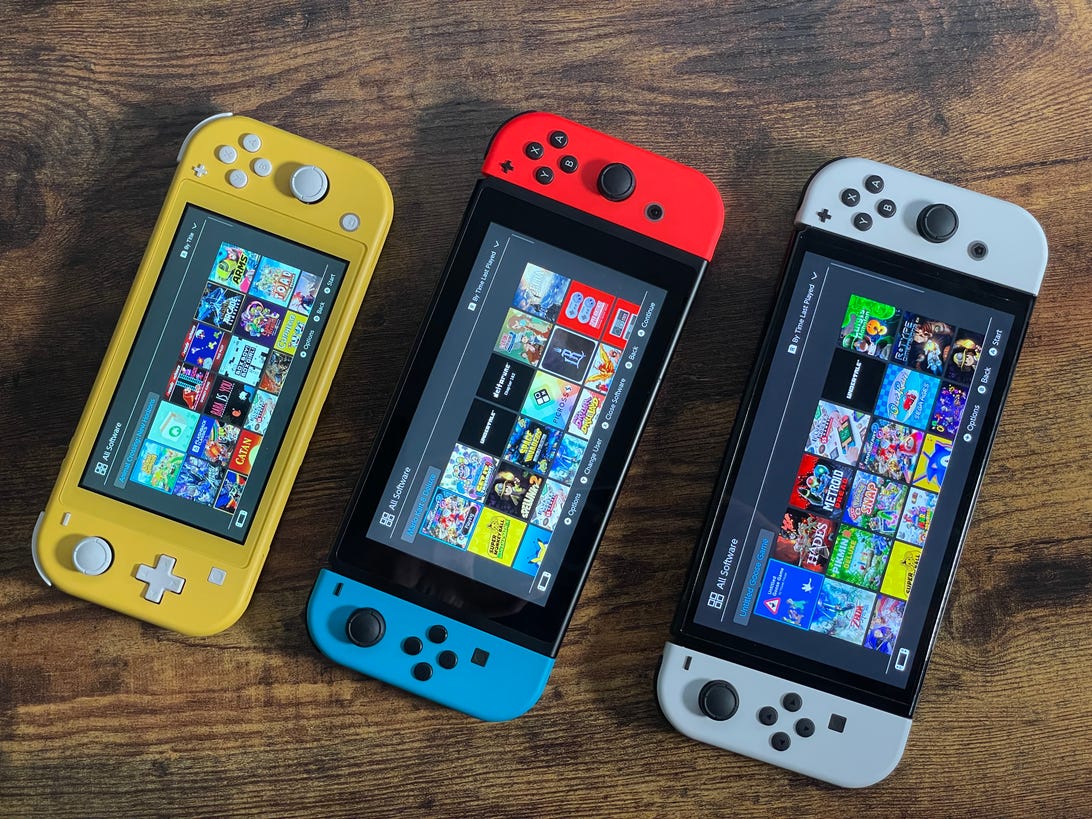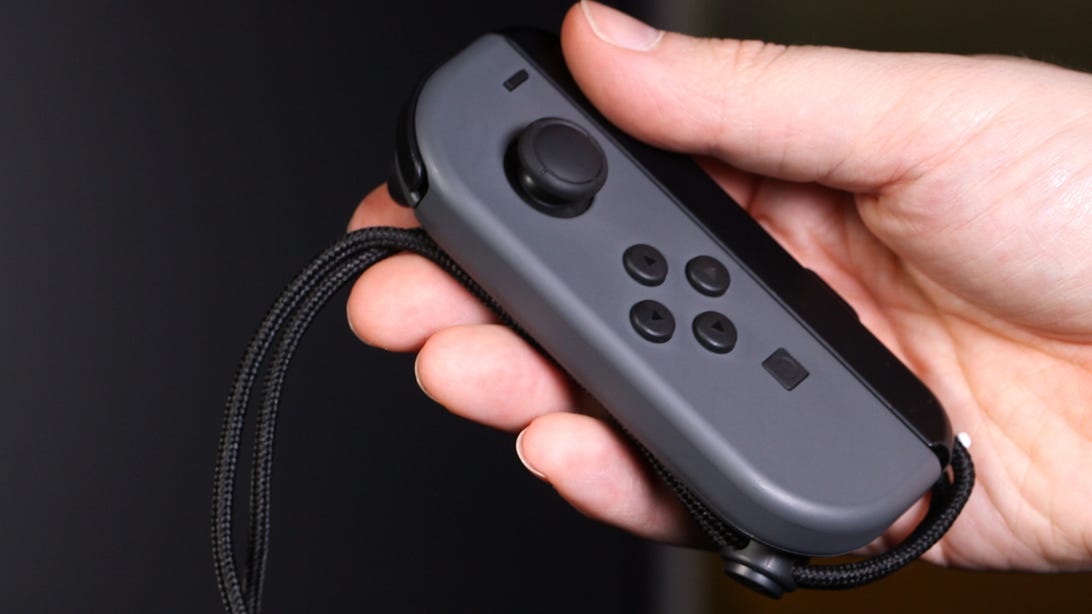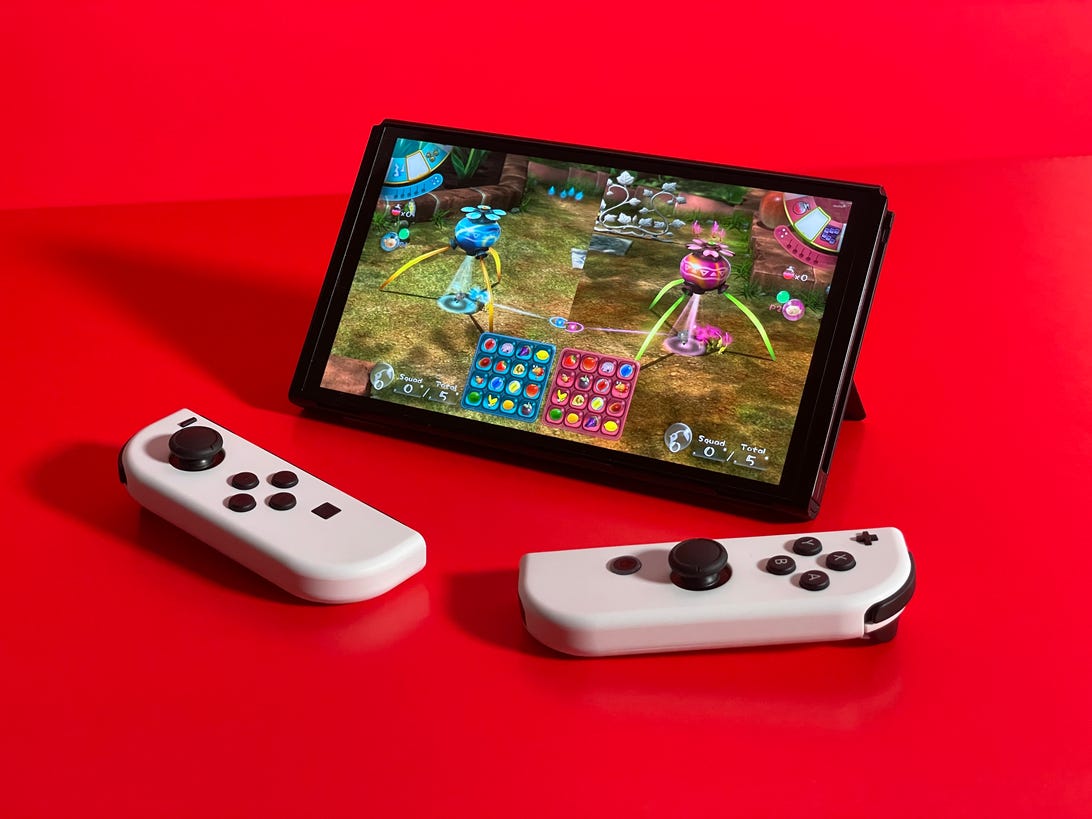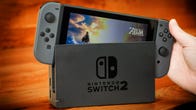Nintendo, it’s time for a Switch 2

The Switch Lite (left), Switch (middle) and OLED Switch (right): the three Nintendo Switches available now. When will a sequel arrive with a truly upgraded processor inside?
Scott Stein/CNET
A new Nintendo console has historically rolled out every five or six years — and the Switch, which made its debut in 2017 and has just surpassed 100 million in sales, is due for an upgrade. Since the Switch’s initial release, Nintendo has optimized the console’s battery life and released versions in varying sizes. But much about the Switch has stayed the same, from the CPU/GPU to the concept itself.
Last year, it seemed like we might get a whole new Switch. Instead, the Switch OLED ended up being an incremental upgrade. Will Nintendo finally evolve the Switch even further? Nintendo has historically released new consoles roughly every five to six years, and the Switch came out in 2017. The Wii U, in 2012. The Wii, 2006. The GameCube, 2001. The N64, 1996.
Does that mean Nintendo could dream up a whole new successor to the Switch, something that could be completely different and unexpected? As different from the Switch as the Wii was from the GameCube? Who knows? But we may still see a true upgraded version of the Switch (a Switch 2, a Switch Pro or whatever it’s called) in the near future, something that’s a true boost compared with the more modestly tweaked Switch OLED released last fall.
Reports suggest that a Switch Pro might still be in the works, or perhaps that the Switch Pro will end up becoming a Switch 2. Would Nintendo plan that hardware alongside the next Breath of the Wild game later this year, or early next? Would that be the hardware that the long-expected Metroid Prime 4 is made for, maybe? Nintendo’s comments last year suggesting the Switch is midway through its life cycle suggest more iterative upgrades to come, but right now a more powerful chip seems like the logical next move, whenever that might be. Last fall, Bloomberg reported on game developers already having hardware to work on 4K Switch games.
It would make a lot of sense, but I’ve been down this road before… last year, to be exact. Nintendo hasn’t indicated that any new hardware is coming, but Nintendo tends to keep its hardware news under wraps, and surprise announcements (like last year’s sudden OLED Switch drop) are the norm. Right now, it’s fine to buy a Switch that’s already out there: Don’t wait, especially when news on new hardware is pretty quiet.
Nintendo already checked off a few of my Switch wish-list boxes with the OLED model last fall. But let’s dream of that Switch 2, because there are some clear areas to address as this hardware hits its five-year mark.

Nintendo’s latest games like Pokemon Legends: Arceus are starting to feel like they’re pushing the limits of current Switch hardware.
Screenshot by Scott Stein/CNET
A new processor
4K graphics aren’t the only thing Nintendo could adopt: Think graphics that could let the Switch finally compete with newer Xbox and PlayStation consoles and games. The Switch has been struggling with games that push high-end graphics that can run on the PlayStation 5 and Xbox Series X. It’s led to a trend of cloud streaming games on the Switch that need to be internet-connected to work. While game streaming is only going to grow, the Switch needs to be able to handle these games better. Could it even, somehow, add graphics processing in the dock itself? That would ramp up the cost, but it’s an interesting thought. Some computers can do that now, adding a Thunderbolt-connected graphics unit while docked. But on a console it could become a messy idea (memories of the Sega Genesis 32X start to pop up).
One question with an upgraded Switch processor would be how Nintendo balances games for the “new” system versus the older one. The Nintendo 3DS got a chip upgrade midcycle with the New Nintendo 3DS, but its advantages were subtle. Sony’s PlayStation 4 Pro improved graphics for many PS4 games, acting as a stepping stone between the PS4 and PS5, but it wasn’t an essential pickup for most gamers. Microsoft did something similar with the Xbox One X before the Series X/S, so there’s precedent.

The Switch controllers are still the same, five years later.
Charles Wagner/CNET
Fix those Joy-Cons
Those little versatile Joy-Con controllers that slide onto the Switch are a brilliant idea… but they’ve aged awkwardly. Many Joy-Cons end up with drift problems or worn-out buttons over time. I can’t stand how small they are, and their trigger buttons, which aren’t analog. The haptic vibrations, while ahead of their time in 2017, now seem behind what the Xbox and PlayStation (and phones) can do. The Switch OLED’s Joy-Cons are meant to have subtly addressed the drift problem, but are otherwise the same as ever.
I’d love a whole new type of Joy-Con, one that could still work with older Switch games. I’d even say that an improved Joy-Con might be my most hoped-for feature on a next-gen Switch.

The OLED Nintendo Switch display is great, but still 720p. A future Switch could do even better.
Scott Stein/CNET
An even better Switch display
The OLED Switch has an excellent 7-inch OLED screen that’s far more vibrant than previous Switch models. I love it, but it’s not enough. That display’s 720p resolution is fine for Nintendo’s current games, but an even better 1080p OLED would make sense for a next-gen Switch. The Switch can already output to 1080p on a TV with the dock. Maybe that screen size could be improved even more, creeping to 8 inches? The OLED Switch shrank down bezel sizes considerably compared with the older Switch, but there’s still wiggle room.
Most current Nintendo games don’t lean on high-res graphics that much, but if Nintendo boosts that processor to allow for more competitive next-gen games to work on Switch hardware, there would be reasons to improve that display.
But when?
Trying to read the Nintendo crystal ball on when its next hardware will arrive is often nearly impossible. Nintendo keeps its news extremely locked down, and doesn’t tend to announce hardware on any normal or event-targeted schedule. Nintendo has frequent Direct video streams announcing games, but its consoles and surprise curveball products often emerge with no advance warning at all. But, five years into the Switch’s life cycle, it feels like the countdown to a truly new Nintendo gaming device has already begun.


-3.png?width=698&height=393&name=blog%20image%20Salima%20(1)-3.png)